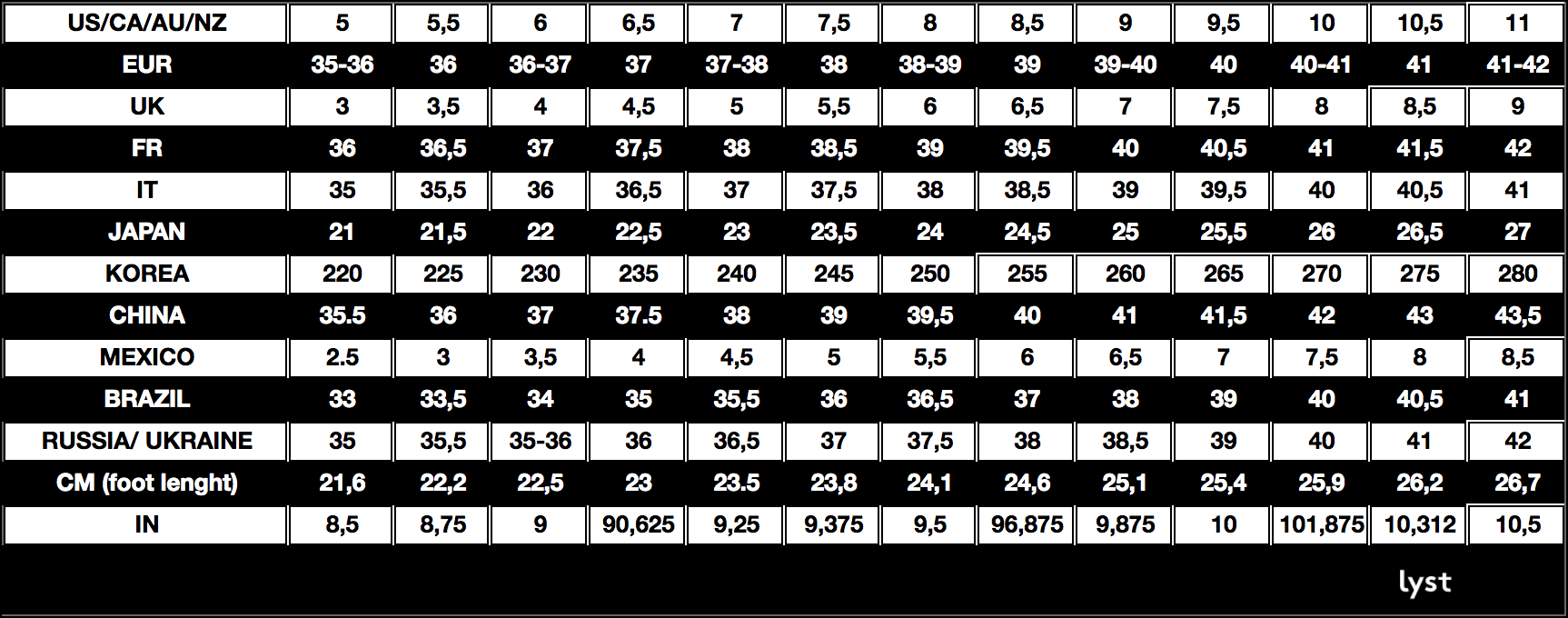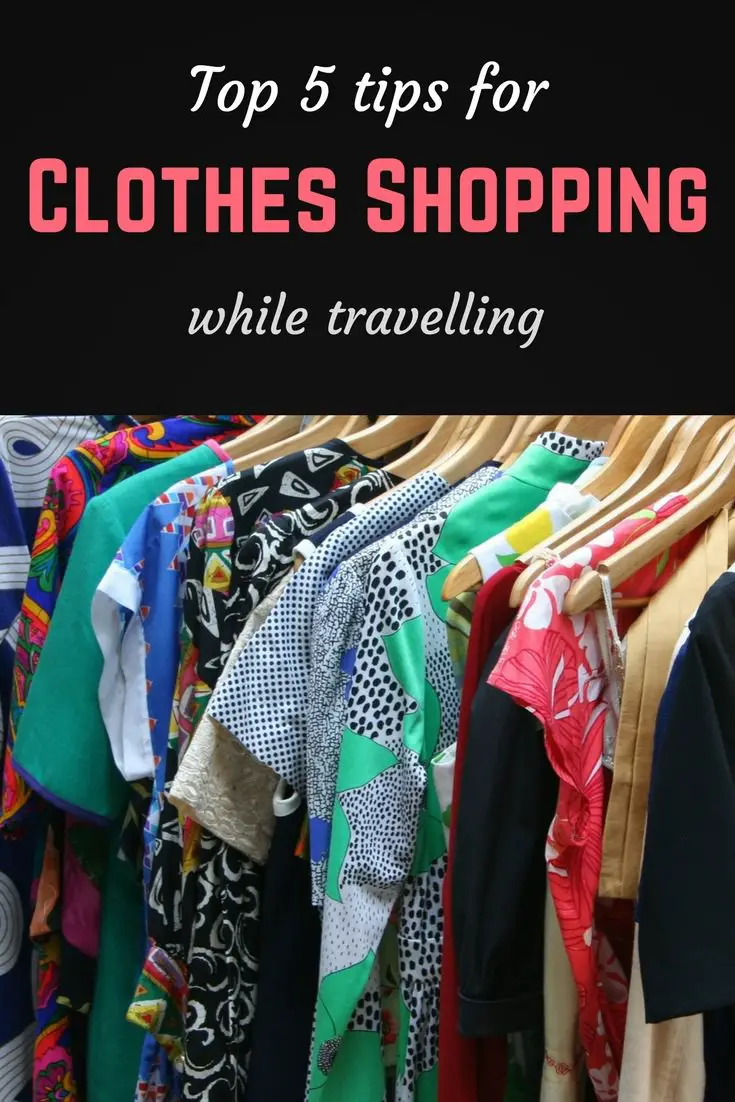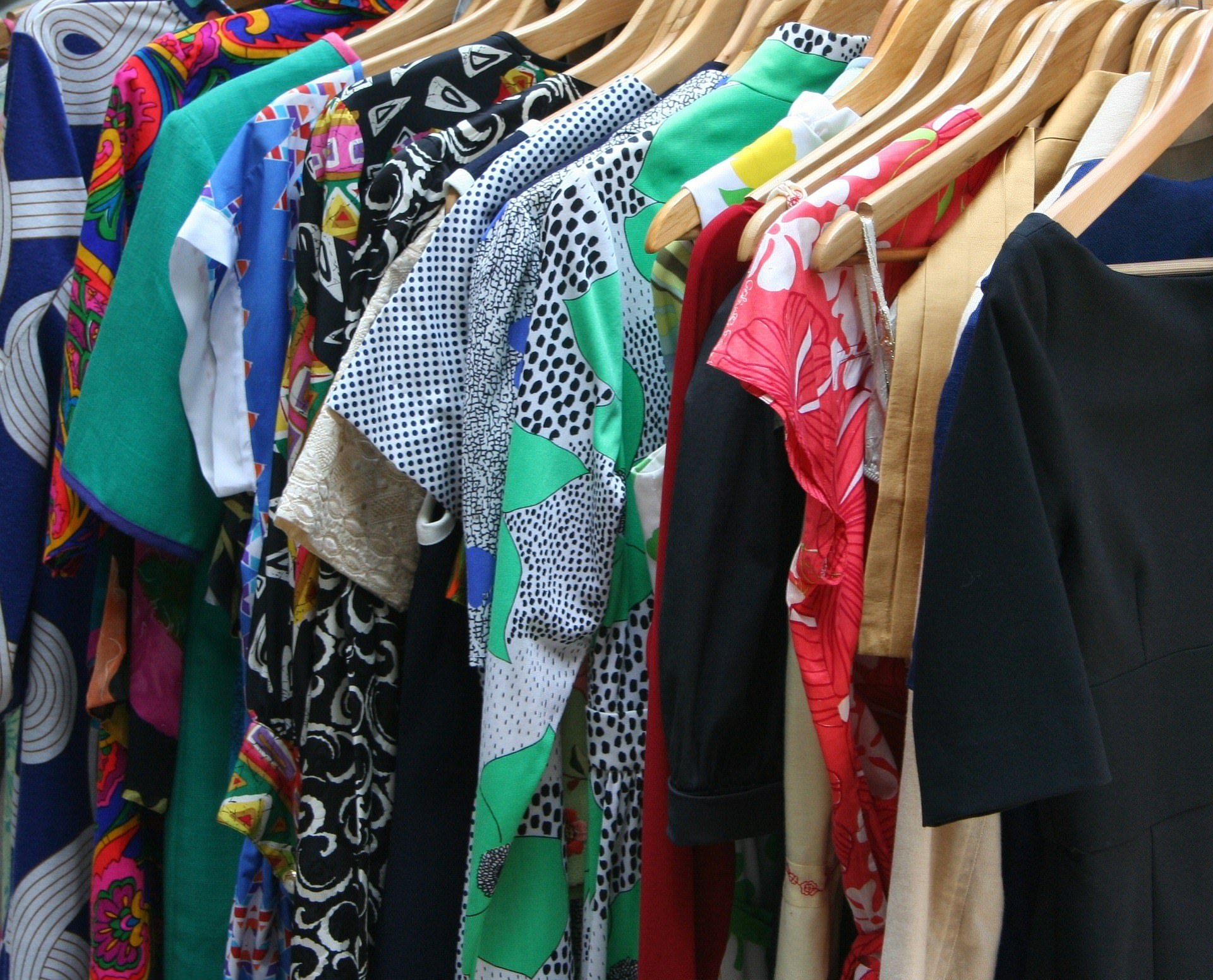Top 5 tips for clothes shopping while travelling
If you love shopping, heading to a local mall or market will be a logical part of any overseas trip. You’ll love exploring the options, marvelling at how many (or how few) shops are just the same as the ones back home, and hunting out bargains or interesting pieces.
And if shopping isn’t your idea of the best way to spend your holiday, a short trip to the shops might be necessary — perhaps your travelling companion really wants your company on a shopping excursion, or your luggage doesn’t arrive, or you discover that the clothes you packed just aren’t going to go the distance.
Whatever your reason for going clothes shopping while travelling, these tips will help!

1. Prepare space in your luggage
If you know you’re going to be shopping during your trip, make sure that there’s space in your luggage to bring your purchases home! Serious shoppers could pack a small suitcase, then insert that suitcase inside a larger one. This trick works best with suitcase sets!
This way, you’ll only be lugging one suitcase to your destination, but you can bring two full suitcases back. Just make sure your return flight allows you to take two bags, or ensure that the smaller bag is carry-on sized.
Another option for clearing space in your luggage is to make use of clothes that are near the end of their natural life, which you’re considering throwing away. Pack these clothes, wear them one more time while you’re on your trip, then thrown them in the bin. Voila — luggage space! Also, less laundry to think about.
If you’re a long-term traveller, you might need to consider a “one-in-one-out” policy, so every time you buy a new shirt, an old one hits the dust. If it’s still in good condition, post it home or donate it to a charity shop (after washing, please!).

2. Have a plan
It’s usually a good idea to have a rough list of what you’d like to buy before setting out, though you might like to allow for one or two “impulse buys” in case you see something amazing that isn’t on the list. You can keep your list items general (two t-shirts, for example) or be quite specific (such as a particular dress or a certain brand of shoe). If your luggage space is limited, you may need to be more vigilant with yourself about keeping to the list.

3. Know your size before you go
Clothes sizes vary wildly around the world, even when similar symbols and numbers are used. I’m a size 12 in my home country of New Zealand (that’s US 8) and I’ve found clothes that fit in every size from extra small to 4XL. Apparently, my size-12 body is well above average size in some Asian countries :).
Until we have a universal sizing system (oh, how I wish for it), understanding your size can save you time in the shops. Check out this Wikipedia article for a comprehensive guide to sizing. Or, you can do my trick — pick up two sizes either side of the one that looks about right and try on all of them until you hit upon the one that works.
Know your shoe size, at least
If nothing else, know your shoe size in the country you’re headed to, since attendants often have to head to a storage area to pick up shoes in different sizes. The size chart below will help!

If you’re travelling in a country where English isn’t the main language, also learn how to say the size in the local language, as well as the words “please”, “thank you”, “yes”, and “no”. In Spain, for example, I could say “trienta y nueve, por favor” in a questioning tone, while handing a shoe to a shop assistant, and he or she would know I was looking for that shoe in size 39 (8.5 in NZ/US sizing). By the way, learning “yes” and “no” helps you understand the attendant’s response!
4. Explore different shopping options
Many, many countries have malls or shopping centers packed with shops, and many of these stores are global chains that you’ll see everywhere. By all means stop in and see if they have any deals or local items, but you may end up having a similar experience as you would if shopping at home.
Instead, look for shops you’ve never heard of, or avoid the malls altogether. Ask a local where the best place for clothes is — it may be the city high street, or a certain area of town.
Also, be prepared to try shopping in a different way. In the UK, for example, many people buy good-quality second-hand clothes at charity shops — I found a couple of great pairs of trousers at one recently. In Asia, tailors produce custom suits and other clothes at a fraction of the price of the same item ready-made in other countries. Markets can also be a great place to find clothes in a lot of countries. Jump in and shop the way locals do!

5. Think about whether the new purchase will work at home (and whether you care)
When shopping abroad, you may come across a wonderful piece of clothing that you absolutely love. Perhaps it’s a common local item, or is perfect for the climate or local style. Before you buy, consider: is this something you’ll wear back home?
More than once, I’ve bought something that was cool and (I thought) elegant in the country of purchase, but just didn’t work for my style or the climate when I took it back home. Similarly, a friend of mine bought several salwaar kameez outfits while in India (and looked amazing), planning to keep wearing them after her return. But she found that the outfits just didn’t work at home — she felt like she was dressing up.
You may decide to purchase something just for use in your destination (like the salwaar kameezes mentioned above), in which case you might need to consider the cost. Is this item worth the price if you’ll only be keeping it for a short time?
Since I travel with carry-on-sized luggage, I sometimes find myself in climates that I don’t have enough clothes for. In that case, I may pick up a cheap jacket or extra pair of shorts, to wear while I’m in that destination. If I’m planning on taking the items home, I may splurge a little, but if not I’ll spend as little as possible!
Considering when and how you’re likely to use your purchases can help you decide how much to spend, as well as whether you really want to buy them at all.

Shop responsibly
Finally, take your conscience with you when you’re shopping. Avoid shops that are known for using sweatshop labour and head to stores that support free trade initiatives. When possible, choose local brands to support the country you’re in!
Take your own tote bags or a stuff-down backpack with you so you can turn down any plastic bags you’re offered, and leave shoe boxes at the store for staff to recycle if possible.
Shopping while travelling can be a great experience — what are your top tips for clothes shopping on the road? Leave a comment below.








